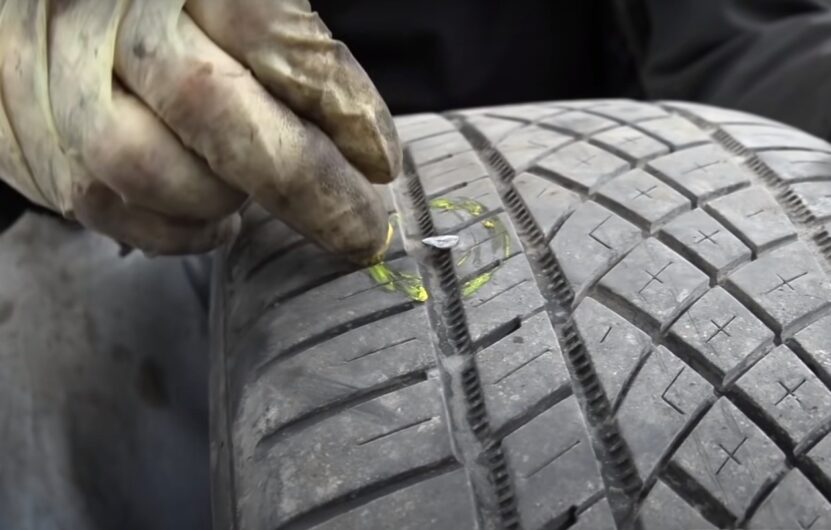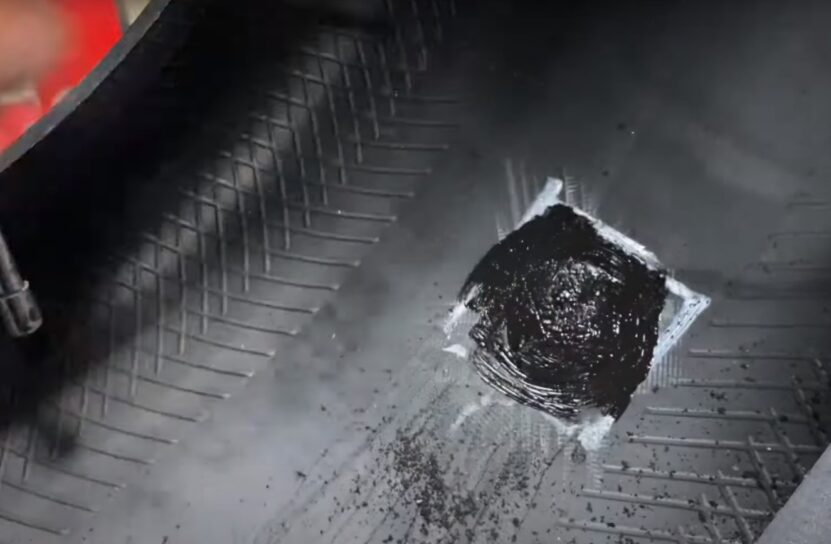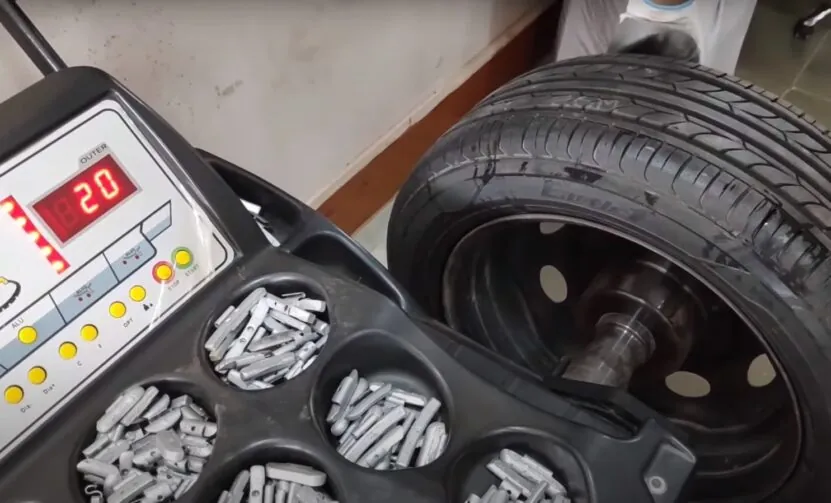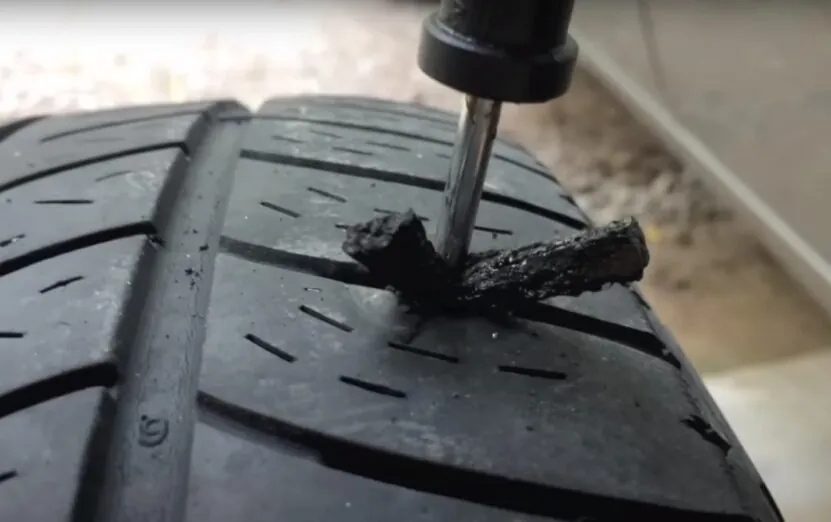In the world of vehicle maintenance, tire care is paramount. Tires are the foundation of your vehicle’s performance and safety on the road.
Among the plethora of repair options, tire patching emerges as a standout for its durability and cost-effectiveness. This method not only offers a robust solution to punctures but also exemplifies financial prudence.
Furthermore, the choice between DIY and professional repairs offers flexibility to vehicle owners, highlighting tire patching’s adaptability to various needs and skills. This introduction sets the stage for a deeper exploration into the benefits and processes of tire patching, underscoring its superiority over temporary fixes.
Key Takeaway
What Is the Cost?

The initial cost of patching a 33-inch tire, including both labor and materials, generally ranges from $40 to $55. Labor charges, which are determined by the repair shop’s hourly rate, often fall between $75 and $130. The repair process, specifically for a 33-inch tire, takes about 15 minutes.
The materials required for the job, predominantly the patch for the 33-inch tire, contribute approximately $6 to the overall expense.
Balancing and Additional Services
After a tire is patched, balancing is crucial to ensure even wear and optimal performance, adding $15 to $30 to the repair bill. This step is essential for maintaining the vehicle’s handling characteristics and preventing future issues such as vibrations or uneven tire wear.
DIY Patching Costs
For those preferring a hands-on approach, DIY patch kits offer a cost-saving alternative, priced at $10 to $20. These kits include all necessary materials but require some expertise and proper tools for a successful application.
While this option can reduce immediate costs, the lack of professional equipment and expertise might affect the quality and durability of the repair.
What Is Tire Patching and How Does It Work?

Not all punctures are eligible for patching. The ideal candidates are punctures located in the tread’s center, at least ½” from the sidewall, and no larger than ¼” in diameter.
An initial inspection by a professional determines whether a tire can be safely repaired with a patch.
Application Process
Applying a tire patch involves removing the tire from the rim, cleaning the punctured area, applying an adhesive-backed rubber patch, and sealing it from the inside. This method ensures a durable bond and airtight repair, addressing both the hole and the internal damage caused by the puncture.
Longevity and Performance
When properly applied, a tire patch can last between seven to ten years, rivaling the lifespan of the tire itself. This repair method not only restores the tire’s integrity but also maintains its original performance capabilities, making it a preferred choice for long-term durability.
What Are the Different Types of Patches?
When it comes to tire repair, not all patches are created equal. The two primary types employed are plug patches and internal patches, each with its distinct advantages and drawbacks.
Plug-Patch
A hybrid approach that combines a plug and a patch, offering a comprehensive solution by addressing both the tire’s interior and the tread area where the puncture occurred. This method effectively seals the puncture from the inside while also filling the hole in the tread, providing a robust repair that is considered more durable and reliable than using a plug or patch alone.
The advantage of the plug-patch is its ability to deliver a repair that closely restores the tire to its original condition. However, it requires specialized tools and skills, often making it more suitable for professional application rather than a DIY approach.
Internal Patch
Strictly applied from the inside of the tire, the internal patch covers and seals the puncture area. It’s known for its reliability in creating an airtight repair and maintaining the tire’s integrity.
While internal patches offer a high degree of safety and durability, the process of removing the tire from the rim to apply the patch can be more labor-intensive and typically necessitates professional installation.
Why is Tire Balancing Important After Patching?

Tire balancing is a critical step following the patching process. This procedure ensures that the weight of the tire and wheel assembly is evenly distributed around the axle.
When a tire is patched, the repair can slightly alter the tire’s balance, potentially leading to uneven tire wear, vibrations, and a decrease in driving comfort and safety. Balancing the tire after a repair minimizes these risks, restoring smooth operation and extending the tire’s lifespan.
How Does Tire Patching Compare to Other Tire Repair Methods?
Facing a flat tire can be a frustrating experience, leaving you wondering about the best repair method. Worry not, fellow traveler!
Tire Plugs
Tire plugs, a quicker and often cheaper repair method, are best suited for temporary fixes. Priced between $10 to $20, plugs can quickly seal punctures from the outside but do not match the reliability and permanence of patches.
Plugs are considered less safe for long-term use, especially on high-speed roadways.
Tire Sealants
Tire sealants offer an immediate but temporary solution, ranging in price from $6 to $12. While convenient for emergencies, sealants can potentially cause imbalance and corrosion within the wheel assembly.
They are not recommended for long-term repairs due to these potential issues and their inability to address internal damage.
Cost-Effectiveness and Safety
Comparing these methods, tire patches emerge as the most reliable and cost-effective solution for puncture repair. Despite the higher initial cost compared to plugs and sealants, the long-term benefits of safety, durability, and performance make patches the superior choice for conscientious vehicle owners.
DIY Patch Kit Limitations
While DIY patch kits offer an accessible and cost-effective solution for tire repair, their effectiveness is significantly influenced by the user’s technique and the quality of the equipment used. These kits typically include a patch or plug, adhesive, and basic tools for application.
However, the limitations lie in the precision required for the repair and the lack of professional-grade tools and balancing equipment available to most DIYers. Incorrect application of a patch or plug can lead to a failed repair, potentially compromising tire safety and performance.
Additionally, without the ability to properly balance the tire post-repair, drivers may experience reduced ride quality and accelerated tire wear. Therefore, while DIY kits can be useful for temporary fixes or minor punctures, the importance of professional expertise and equipment for a reliable and safe repair cannot be overstated.
FAQ
Can a tire with multiple punctures be patched?
Yes, a tire can have multiple punctures patched if each puncture is suitable for patching (located in the tread’s center, away from the sidewall, and small in diameter). However, the total number of patches should not compromise the tire’s structural integrity, as determined by a professional.
Is tire patching suitable for all types of tires?
Tire patching is suitable for most types of tires, including passenger, SUV, and light truck tires. However, certain high-performance or specialty tires may have manufacturer guidelines or limitations regarding repairs.
How does weather affect a patched tire?
Properly patched tires perform well in various weather conditions. The quality of the patch and the adhesive used ensure the repair remains secure and airtight, regardless of temperature fluctuations or wet conditions.
Can I drive immediately after getting a tire patched?
Yes, you can drive immediately after a tire is patched and properly balanced. The patching process ensures the tire is safe for use, but it’s advisable to follow any specific recommendations provided by the service technician.
How do I know if a patch or a replacement is necessary?
A professional inspection will determine if a tire can be safely patched or needs to be replaced. Factors include the location, size, and nature of the puncture, as well as the tire’s overall condition and tread depth.
Are patched tires safe for high-speed driving?
Yes, when correctly applied, a tire patch is safe for high-speed driving. The repair restores the tire’s integrity, allowing it to perform as intended across speed ranges. However, always ensure the repair is done professionally to maintain optimal safety.
Final Words
In conclusion, tire patching stands as an exemplary choice for repairing punctured tires, offering unmatched durability, safety, and cost efficiency. Its ability to extend a tire’s lifespan by up to a decade ensures that drivers can enjoy uninterrupted performance and peace of mind.
Whether opting for a professional service or taking the DIY route, the investment in tire patching pays dividends in the long run, far outweighing the initial costs when compared to the temporary solutions of tire plugs and sealants.
Tire patching, therefore, is not just a repair method; it’s a strategic choice for maintaining vehicle safety and performance, proving its worth as the superior solution for tire maintenance.
